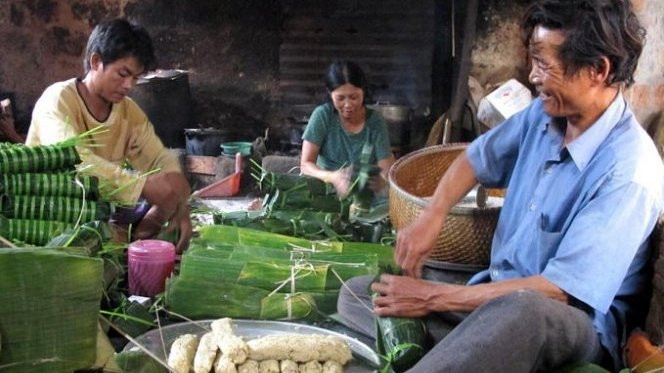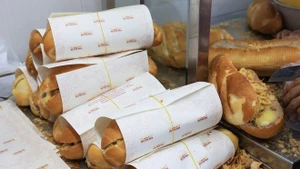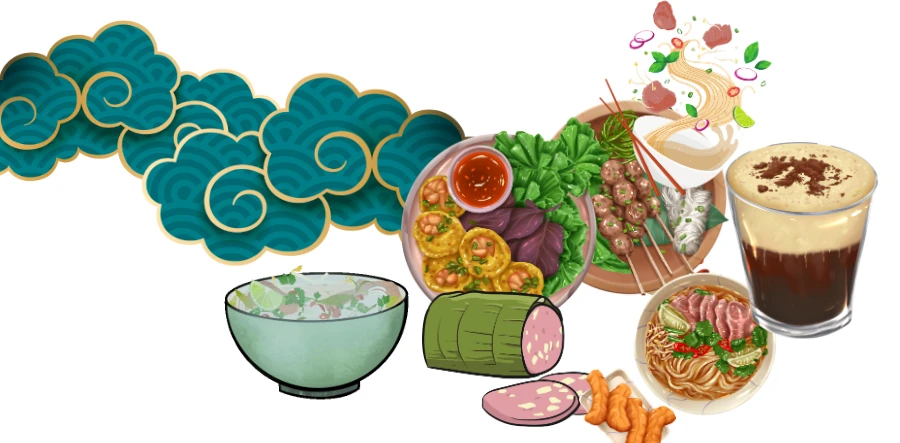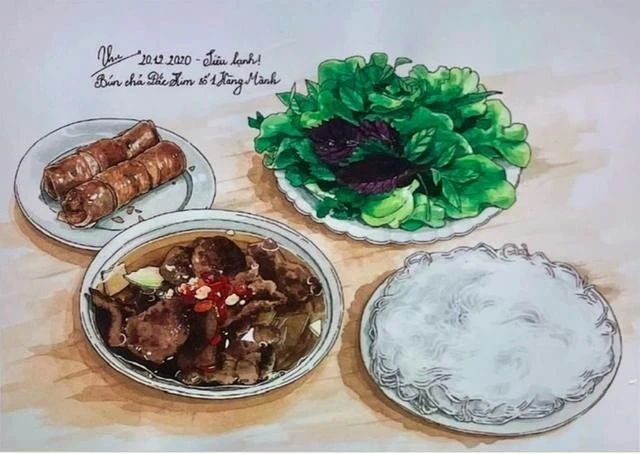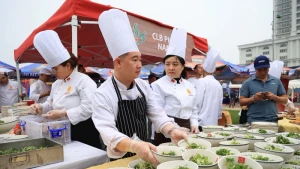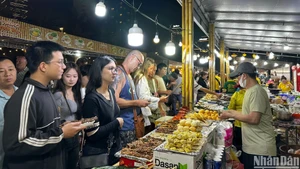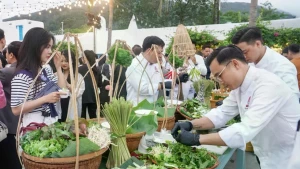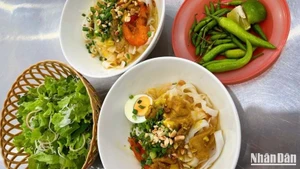The reputation of Tet cakes made-in-Chuon-village has been established nationwide since they were first used among offerings to the Kings.
It was said that hundreds of years ago, Chuon villagers sectioned off around 7.2 hectares of land to plant the finest variety of glutinous rice, known as ‘Tay’ rice. During the Nguyen dynasty, each year villagers had to pay tribute to the King with two baskets of ‘Tay’ rice and one more basket of rice planted in Cua paddy field, as they were both regarded as the most delicious varieties of rice in Hue. The ‘Tay’ rice was also selected to make Tet cakes, which were then offered to the King and mandarins ahead of the lunar New Year festival.
Hundreds of years have past, but elders in the villages have still preserved the recipe and techniques of making Tet cake, which brings a special flavour to the dish.
The small village houses over 70 households, which can earn a good living from making Tet cakes thanks to the village’s reputation as the best of its kind in Hue. Many households have had three or four generations working together to make Tet cakes.
Whenever lunar New Year holiday comes, households in the village make at least 1,000 Tet cakes, or even up to 4,000 – 5,000.
Children help their mothers clean leaves; women show their skill in washing rice, seasoning and cooking the ingredients; while men finish the last step of wrapping the beautiful cakes.
Doan Rang, nearly 80 years old, has made Tet cakes since he was a child. He revealed that Tet cakes made in Chuon village can be stored for up to 20 days with the flavour still kept intact.
Since it was first used as an offering to the King, the cooking of Tet cakes is sophisticated. According to Rang, rice used to make Tet cake must be the finest with even grains, which are carefully examined before cooking. The rice is then soaked carefully, washed and left to drain. The stuffing of the cake includes ingredients such as soaked green beans and pork fat, which are cut into bars.
Banana leaves are used for wrapping Tet cake as long as they are not too old. To give the cakes their signature green colour, the cook adds some ‘mat luc’ leaves into the pot before boiling.
The cook has to change the water in the pot at least two times to prevent the cake’s leaves from going brown. He also has to keep the fire burning evenly for 12 hours to ensure the cake is well cooked. The cake is then tied-up, although not too tight in order to allow the heat to absorb into the leaves and soften the grains.
The soft and glutinous flavour of the crust, the fat and savoury taste of the stuffing, together with the peppery-hot taste of pepper and onion creates an appetising attraction for Chuon village’s Tet cakes.
The dish is not only found on Hue people’s plates but has also been sold at markets around the world. Chuon villagers, therefore, have made appropriate adjustments to the cake so that it can be suitable with the palates of foreigners.
